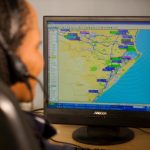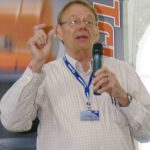A legend leaves a legacy behind …

Few people have impacted so indelibly on the fleet and vehicle management sector as Fritz Hellberg. He had insight and expertise that had members of the industry clamouring for his knowledge. He generated respect and was appreciated and acknowledged for the ever-evolving role he played in the industry.
Fritz had a background in mechanical engineering and back in 1972 the seed was sown in his imagination for the dynamic vehicle simulation program that is now widely used in the southern African transport industry.
But it was only in the 1980s, as a sales manager for Mercedes-Benz commercial vehicles, that the basic concept of the early vehicle simulation software program was developed. It was based on the need to accurately predict total cost of ownership for vehicles over varying terrains and under different loading conditions.
Fritz’s brainchild was the development of TransSolve, a vehicle selection and transport planning software, primarily aimed at commercial vehicle manufacturers and their various dealer networks.
Under the one-man operation, Hellberg Transport Management (HTM) – which is now considered a leader in computerised planning for the transport industry – the system set the benchmark for subsequent simulation products, right up to the present day.
How the system evolved
The purpose of the system was to provide sales and technical personnel with a means to imitate trucking operations – through simulation. The software used designated routes and conditions – covering a broad range and different types of trucks, with a variety of specifications – and offered reasonably accurate data on running costs. Differently spec’d vehicles could be matched against each other, on the same simulated route, to explore running cost differences associated with that route.
To ensure accuracy of the system, comprehensive route profiling – which included longitude and latitude, a detailed analysis of the altitude, gradients and type of terrain the vehicles would be operating in – was vital to the success of the system. Initially, measurements were made with analogue altimeters and car odometers, while audio recordings of these readings were made onto tape and then later transcribed into computer files.
Through trial and error, the system was tweaked and refined for the growing customer base and (under further controlled conditions) the results were verified against actual truck tests, which further confirmed the accuracy of the system within the industry.
The advent of GPS in 1994 saw Martin Dammann (who joined HTM in the same year) and Peter Coleman undertake a major route survey into neighbouring Zimbabwe, Zambia, Malawi and Mozambique. From 1997 onwards, further comprehensive surveys were conducted over 120 000 kilometres throughout southern Africa, with other surveys undertaken as far afield as Uruguay.
However, surveying routes themselves was not sustainable, given the depth of detail required. Enter the world of electronic mapping, which quickly solved the problem and this high-end technology was incorporated into the TransSolve suite.
The current modules comprise load distribution, routing, vehicle performance, finance, maintenance and costing, as well as a static specification comparison section – all combined in a user-friendly interface.
Despite the ease of use and functionality, at no stage did Fritz ever recommend that any operator simply allow the system to run the operation. He advised, rather, that the operators fully understand their operations and learn how to measure losses and gains and understand what the costs reflected by the system represented.
His knowledge was highly sought after and his input valued as he advised on how best to achieve realistic running costs and to envisage returns objectively and practically, aided by his visionary system.
His innovation has changed the face of fleet and vehicle management. TransSolve is continually being enhanced to include customer input and requirements and is now the industry-standard software for vehicle selection in southern Africa. It is also widely regarded as one of the best systems in the world.
Published by
Focus on Transport
focusmagsa




